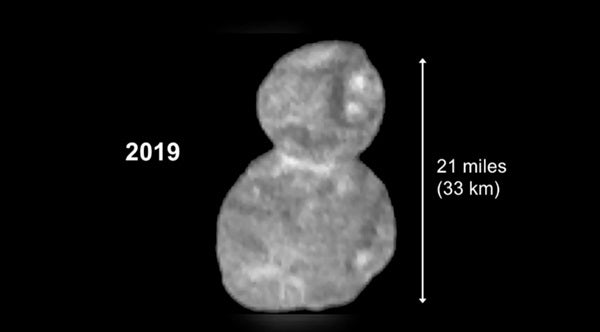We now know the basics of this strange object, the most distant solar system body ever explored by a spacecraft. It is approximately 21 miles long. It has a rotation period of about 15 hours. It is very dark, reflecting only about 10 percent of the light that strikes it. It is reddish in color, probably from the radioactive decay of organic compounds on its icy surface.
Scientists can also now infer some geological properties of Ultima Thule. The body has a mottled appearance due to some surface irregularities or differences in elevation. It appears not to have any impact craters. It does show the tight, squeezed area of a belt, the small region where the two lobes are in contact. It has some brighter regions, and some darker ones. We’ll continue to learn much more about the object’s geology in the coming hours and days.
Planetary scientists have now nicknamed the two lobes, giving the name Ultima to the larger one and Thule to the smaller one. We believe that Ultima Thule, which represents pristine, unchanged icy material from the early days of the solar system, formed when small, icy bodies came together, accreting into larger ones. Two of the larger bodies stuck together gently as much smaller ones cleared out. The remaining two lobes formed Ultima Thule, and with its material we have a window into the early solar system.
The best summary of this day came from a team slide: “Think of New Horizons as a time machine that has brought us back to the very beginning of the solar system, to a place where we can observe the most primordial building blocks of the planets.”










